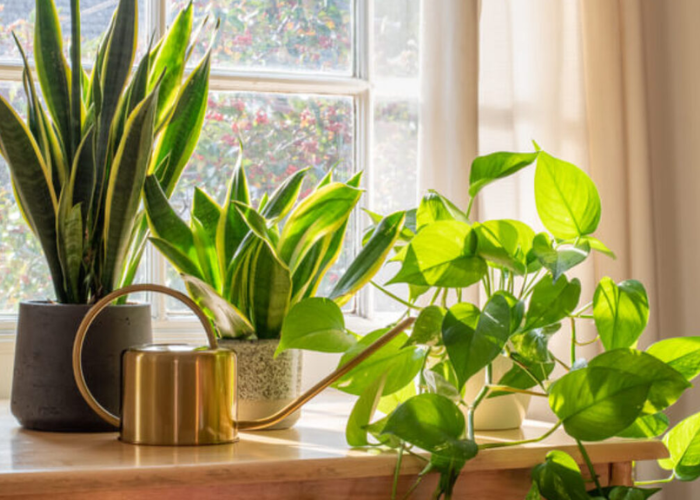Indoor air quality has become a major concern in recent years. With the increased use of air conditioning, airtight homes and offices, and other technologies, the air inside our homes is often more polluted than the air outside. Fortunately, houseplants can help improve indoor air quality. In this article, we’ll discuss the best plants for improving indoor air quality, the health effects of indoor air pollutants, and how to choose the right plants for your home.
What Are Indoor Air Pollutants and Their Health Effects?
Indoor air pollutants can be divided into two categories: particulate matter and volatile organic compounds (VOCs). Particulate matter is particles suspended in the air, such as dust, pollen, smoke, mold, and pet dander. VOCs are chemicals released from household products such as paint, household cleaners, and furniture. Both of these pollutants can cause a variety of health problems, including allergies, asthma, headaches, and respiratory illnesses.
Common Houseplants to Improve Indoor Air Quality
Houseplants can help reduce the number of indoor air pollutants by filtering the air. Some of the most effective plants are peace lilies, snake plants, spider plants, dracaenas, aloe vera, chrysanthemums, and English ivy. These plants can help reduce levels of VOCs and particulate matter, as well as remove toxins from the air.
VOCs and Indoor Air Pollution
VOCs are one of the most common indoor air pollutants. They come from a variety of sources, including paint, furniture, cleaning products, and air fresheners. VOCs can cause a variety of health problems, including headaches, nausea, eye irritation, respiratory problems, and even cancer. Fortunately, many houseplants can help reduce levels of VOCs in the air.
How to Choose the Best Plants for Your Home
When choosing plants to improve indoor air quality, it’s important to consider the size of your space, the amount of light available, and the type of pollutants present. Some plants require more light than others, so if your space is dark it’s best to choose plants that don’t need as much light. It’s also important to consider the size of the plant. Some plants, such as English ivy, can grow very large and require a lot of space.
Wrap-Up: Benefits of Houseplants
In addition to improving indoor air quality, houseplants have a variety of other benefits. They can boost your mood, reduce stress, and even help you sleep better. Houseplants can also help reduce noise levels and add a touch of nature to your home.
Conclusion
Houseplants are a great way to improve indoor air quality. They can help reduce levels of particulate matter and VOCs, as well as remove toxins from the air. There are many different types of houseplants to choose from, so it’s important to consider the size of your space, the amount of light available, and the type of pollutants present when selecting the best plants for your home. In addition to improving air quality, houseplants also offer a variety of other benefits, including boosting your mood and reducing stress. With its many benefits, houseplants are a great addition to any home.


